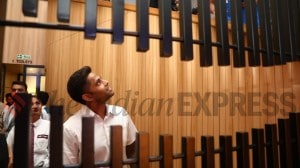SAARC therapy for regional prosperity
As India prepares for the 14th SAARC Summit in New Delhi on April 3-4, it would be useful to recall the NAM summit held in Cuba in December 2006.

As India prepares for the 14th SAARC Summit in New Delhi on April 3-4, it would be useful to recall the NAM summit held in Cuba in December 2006. Even as it made a strong declaration of the intent to make the South an engine of global growth, it sought to re-define globalisation and growth in more inclusive terms. In other words, to think and develop ideas for an alternative development paradigm.
At earlier summits, during the preparation process, think tanks have been set up to provide thought pieces on issues for consideration by the heads of state. For example, SAARC had set up an expert group to prepare a paper on regional development headed by Kamal Hussein. In most of these summits, gender does get included. For example, SAARC made history by choosing the girl child as its theme in 1990 and declared 1991-2000 the SAARC Decade of the Girl Child. Other themes that SAARC have brought into focus had a gender dimension, like trafficking, violence against women and, more recently, home-based workers and networks.
However, in the current political economy landscape, while women seemingly occupy a strong, dominant place in the fast growing sectors — for example, women constitute about 66 per cent of the workforce in the export-oriented garment industry in Bangladesh, although women’s share of employment in non-export industries is only about 7 per cent. They also remain predominant among the poor.
The approach to and inclusion of gender is shifted away from the traditional domains and new ideas developed, which reflect new realities. The SAARC summit should issue a call to set up a women’s think tank for a more inclusive growth path which does not create the kind of glaring inequalities and oppression of today.
The PM has said that there are three aspects of connectivity within SAARC he aspires for: physical, economic, and the web of ideas. Further, developing countries need to reconsider whether mimicking the consumption habits of the West is in their best interest, as it would further destroy an already devastated planet. Wangari Maathai exemplifies this combination of ideas and action on behalf of poor women’s needs and in the cause of environmental conservation. The time has come for women to be perceived as those who have ideas and connectivity and to work towards unleashing that capability. SAARC should be guided by this principle. As it works for the economic prosperity of the region, it should ensure that the environment is not destroyed and the poor are taken along. The best way forward on this is for SAARC to set up a women’s think tank, drawing on the intellectual and experiential capabilities of women in the region, to develop a forward-looking proposal for SAARC in all areas — economic, political and social.






- 01
- 02
- 03
- 04
- 05

























